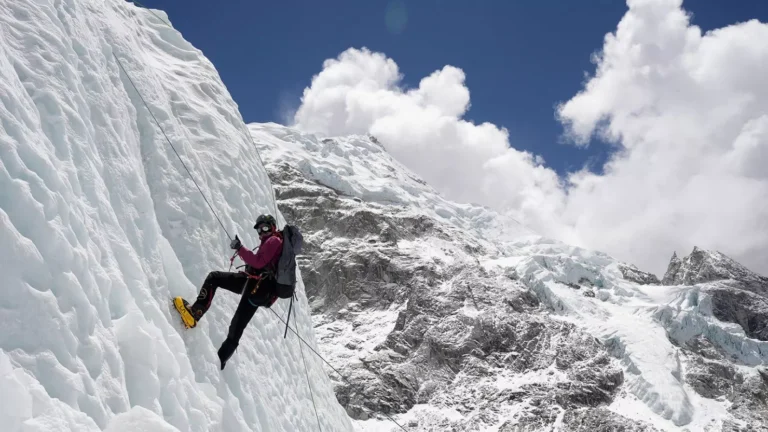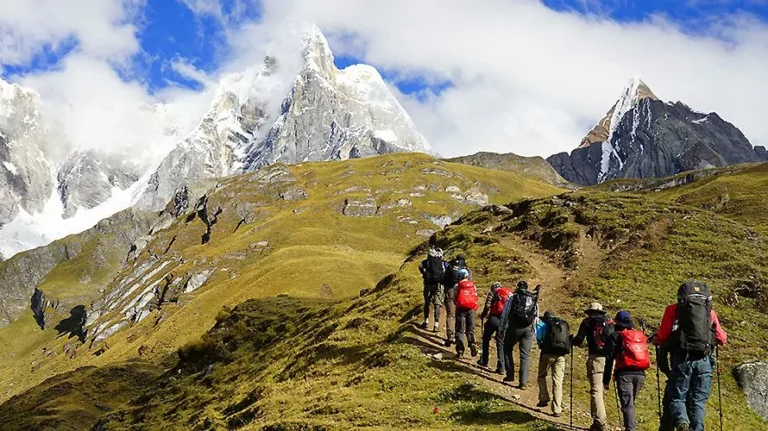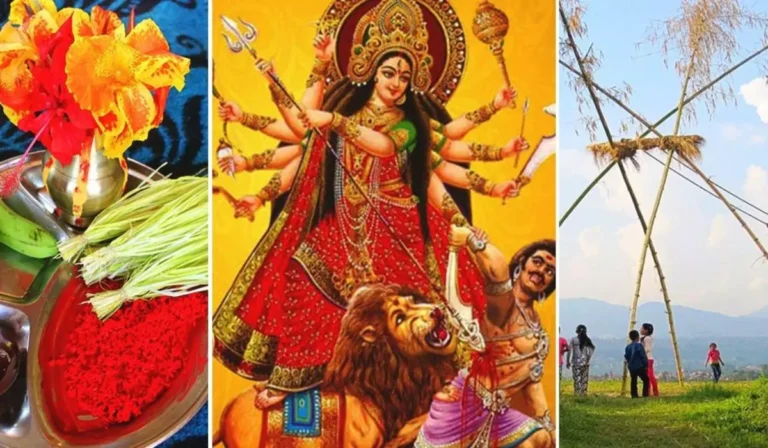- PUBLISHED
Trekking vs Hiking: A Complete Guide for Adventure Lovers

Exploring nature can take many forms, but two of the most popular are trekking and hiking. Both involve immersing yourself in nature, following trails, and enjoying fresh air, but the experience, challenges, and preparation for each are very different.
Hiking is a short and accessible adventure, perfect for beginners; on the other hand, trekking is a longer, more immersive journey. For adventure lovers, deciding between trekking vs hiking depends on your time, fitness level, and travel goals. Do you want a leisurely walk with scenic views or a challenging expedition that pushes your limits? This guide explores the definitions, types, essentials, and key differences between trekking vs hiking so that you can choose the right adventure for your next outdoor journey.
What is Trekking?
Trekking is typically a multi-day adventure that takes you across rugged terrains, remote trails, and often into high-altitude regions. Unlike casual walks, trekking is about endurance and commitment, requiring you to cover long distances each day while carrying essential gear. Treks often pass through remote villages, alpine landscapes, and untouched wilderness, offering opportunities to connect with local cultures and traditions along the way.
Key Highlights
- Usually multi-day journeys.
- Covers longer distances (20–200+ km).
- Demands higher physical endurance.
- Requires gear like trekking boots, sleeping bags, and backpacks.
- Often involves cultural and natural exploration in remote areas.
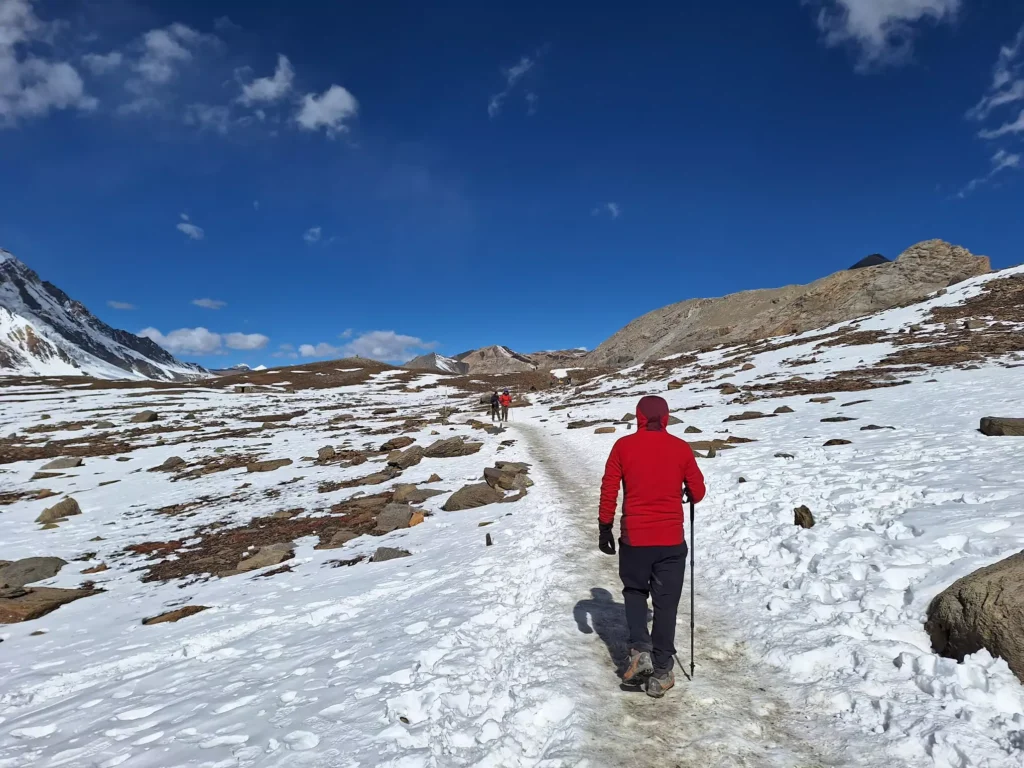
What is Hiking?
Hiking, on the other hand, is usually a short recreational activity designed for relaxation, fitness, or a quick escape into nature. It typically takes place on well-marked trails in forests, hills, or parks and can be completed within a few hours to a single day. Hiking is far less demanding than trekking, both physically and logistically, and it doesn’t usually require specialized gear or detailed planning.
Key Highlights
- Typically lasts a few hours to a day.
- Trails are easier and more accessible.
- Requires minimal gear (comfortable shoes, water, snacks).
- Great for fitness, relaxation, and nature appreciation.
- Suitable for families and all age groups.

Types of Trekking and Hiking
Both trekking and hiking come in different styles, each offering unique experiences depending on your goals, fitness level, and the environment you choose. Understanding the various types can help you plan an adventure that best suits your preferences.
Types of Trekking
Trekking is more than just walking long distances; it’s an immersive journey into rugged and often remote landscapes.
- Tea-House Trekking
Popular in regions like Nepal, tea-house trekking allows adventurers to travel light while staying in local lodges or guesthouses along the trail. The Manslu circuit trek offers comfort with basic amenities such as meals, beds, and sometimes even hot showers. It’s a great way to experience the culture and hospitality of local communities while enjoying the outdoors. - Camping Treks
In camping treks, they carry tents, cooking equipment, and supplies, making it ideal for exploring remote areas where lodges are not available. The treks similar to Annapurna Base Camp require more organization and support staff, but they provide flexibility, solitude, and the thrill of being surrounded by pure wilderness. - Expedition Treks
These are the most challenging forms of trekking, often involving high-altitude ascents, glaciers, and rugged terrains. The Everest base camp trek demands advanced fitness, acclimatization, and sometimes technical climbing skills. They are suited for experienced trekkers who seek adventure, personal challenge, and the excitement of conquering peaks.
Types of Hiking
Hiking is typically shorter and easier than trekking, but it still offers variety. Some hiking trails even take place in cities, blending exploration with cultural experiences.
- Nature Hikes
These are the most common forms of hiking, usually involving trails through forests, lakesides, or hills. Hikers often consider the Shivapuri Hike to be beginner-friendly, often completed in a few hours, and perfect for relaxation, birdwatching, or simply enjoying the beauty of natural landscapes. - Summit Hikes
Summit hikes are short but more physically demanding, often involving uphill climbs to viewpoints, ridges, or small peaks. The reward is usually a panoramic view of the surrounding landscapes, making the Nagarkot hike a favorite among hikers who want a sense of achievement in a single day. - Urban Hikes
Not all hikes take place in the wilderness. Urban hikes like the Jamacho gumba hike explore city trails, heritage walks, or park routes within urban areas. They are easily accessible, require minimal preparation, and are a great way to combine physical activity with cultural or historical exploration.
Packing Essentials for Trekking vs Hiking
Packing is essential when getting ready for trekking vs hiking. It isn’t about fitting everything in your bag. You need to understand what you need to take and what not to take to help prepare.
Essentials for Trekking
Knowing how to pack your bag can help you prepare for your next trek. You should carry:
- Backpack: Carry a durable and comfortable backpack for storing essential gear
- Footwear: Wear durable trekking boots to prevent blisters
- First Aid Kit: It is a must-carry when packing for any sort of adventure
- Sleeping Gear: Carry a comfortable sleeping bag to get a sound sleep
- Navigation Tools: You dont want to get lost, so carry a map, compass, or GPS device
- Clothing: Carry or wear appropriate clothes for the weather
- Cooking Pot: If you plan to cook food yourself, carry it
- Water Bottle: To store water you find on the way to hydrate yourself
- Flash Lights: When it gets dark, it ensures you dont get lost in the wilderness
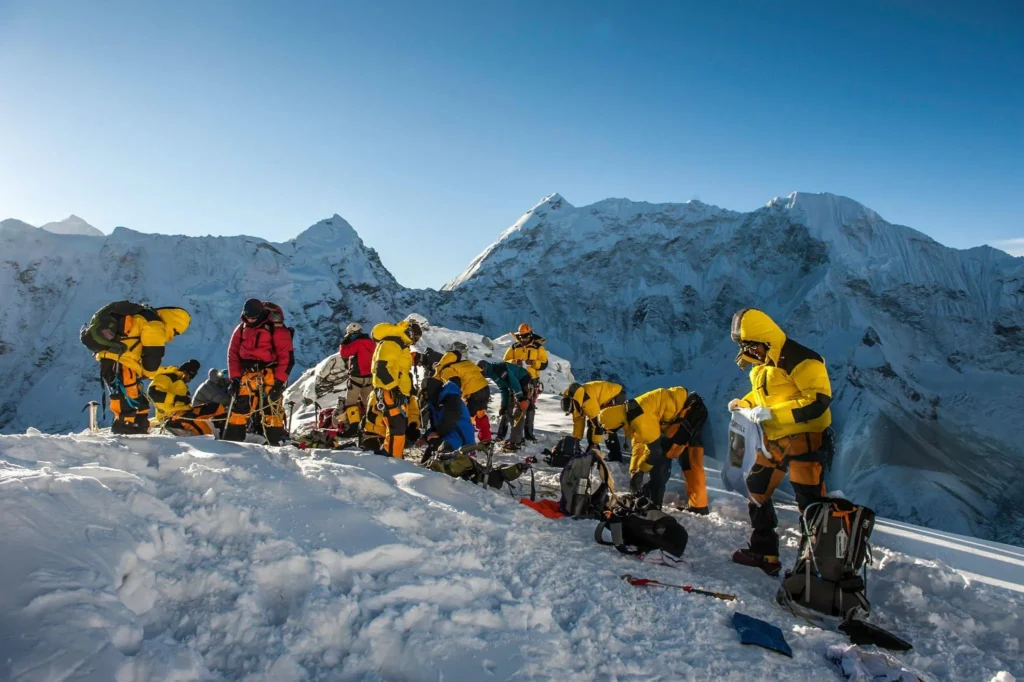
Essentials for Hiking
Knowing what to carry and how to pack a bag can help you prepare for hiking. You should carry:
- Backpack: A comfortable and lightweight bag to store essentials
- Clothing: Wear multiple layers during winter and fewer layers during summer
- Snack: Eating chocolate or energy bars fuels you enough to walk a little bit further
- Flashlight: If the hike takes longer, having a flashlight can help navigate the terrain
- Water Bottle: It’s the same reason you carry a water bottle for trekking
- First Aid: As I said before, it’s essential for any sort of adventure
- Navigation Tools: To prepare you for unexpected adventures off the trail
- Sun Protection: During summer, carry a sunscreen with SPF 50
Difference Between Trekking vs Hiking
These are the differences between trekking vs hiking that ensure you have a clear understanding of trekking and hiking.
Feature
Trekking
Hiking
Duration
Multi-day to weeks
A few hours to a day
Difficulty
Moderate to high
Easy to moderate
Terrain
Remote, rugged, high-altitude
Remote, rugged, high-altitude
Gear Required
Extensive (boots, tents, sleeping bags)
Minimal (shoes, water, snacks)
Physical Demand
High stamina needed
Basic fitness enough
Experience
Cultural immersion, adventure
Relaxation, recreation
Preparation Needed for Trekking vs Hiking
Whether you decide to go trekking or hiking, you need to prepare yourself physically and mentally for the challenges you face, with appropriate training.
Physical Training For Trekking
Trekking involves long days of walking on uneven terrain, often at high altitudes. To prepare, trekkers should focus on building:
- Leg Strength Training: Your legs do most of the work during both trekking and hiking. Exercises like hack squats and Bulgarian splits strengthen muscles, improve stability.
- Core Exercises: Exercises like planks, sit-ups, and Russian twists stabilize your body, reduce the risk of injuries, and improve overall balance.
- Cardiovascular fitness: Activities like running, cycling, swimming, or interval training help enhance heart and lung capacity, ensuring you can maintain energy over long treks or challenging hikes.
- Endurance Training: Focusing on endurance helps you walk long distances over varied terrains without excessive fatigue.
- Strength Training: Focusing on strength training helps you carry your backpack for a longer period.
Physical Training For Hiking
Hiking is relatively easier compared to trekking; you dont need a dedicated training routine, however, having training can help you trek more easily. To prepare, hikers should focus on:
- Simulate Hill Walking: Practice by climbing hills to prepare you for the upcoming adventure and to get acclimated to steep climbs.
- Light Walks: You can walk for 30 minutes to an hour daily until the day of the hike.
- Leg Training: Train your legs using exercises like squats, lunges, and calf raises to target your legs.
Mental Training
Hiking vs trekking is not only a test of your physical capabilities but also a test of your mental resilience. To prepare, you can focus on:
- Understanding weather patterns to prepare helps you plan routes, pack appropriate gear, and avoid hazards.
- Breaking a long trek or hike into smaller milestones keeps you motivated and prevents feelings of overwhelm.
- Cultivating patience and the ability to adapt helps you stay calm and make better decisions.
- Techniques like deep breathing or short meditation can improve focus during long hikes or treks.
Choosing Trekking vs Hiking
The choice to pick trekking vs hiking depends on your budget, fitness level, and personal goals. Both trekking and hiking provide unique opportunities to explore the nature of Nepal.
Choose Trekking if:
- You are willing to explore the Himalayas comprehensively.
- You have a higher budget.
- You challenge your physical strength.
- You are willing to invest in dedicated gear.
- You are ready to commit to a longer 2-5 day trip.
Choose Hiking if:
- You are new to exploring nature.
- You want to build fitness for future adventure.
- You are escaping from the main cities.
- You prioritize scenic views.
- You are short on time.

Key Points to Remember
- Hiking is short and accessible, while trekking is long and demanding.
- Trekking requires more planning, gear, and endurance.
- Both offer physical, mental, and emotional benefits.
- Choose based on your fitness level, time, and adventure goals.
- Hiking is more beginner-friendly, while trekking often suits experienced adventurers.
- Trekking usually takes you to remote, high-altitude regions, while hiking trails are more easily accessible.
- Both activities encourage a deeper connection with nature and promote overall well-being.
Conclusion
When comparing trekking vs hiking, the right choice depends on your personal goals and the kind of adventure you’re seeking. Both experiences bring unique rewards; hiking gives you relaxation and accessibility, while trekking provides challenge, exploration, and lasting memories, whether you’re stepping onto a gentle forest path or preparing for a high-altitude trek. Both adventures guarantee an unforgettable experience and a stronger bond with the natural world.
Are you thinking of escaping the city to explore nature? Feel free to contact us; we would love to help you plan your next hike or trek.
Table of Content
Frequently Asked Questions
What is trekking vs hiking?
Hiking: A recreational walk on well-marked trails, usually lasting a few hours to a full day. It’s less demanding and more accessible.
Trekking: A longer journey that spans multiple days, often through remote areas, rugged terrains, or high altitudes. It requires more preparation and stamina.
What is the main difference between trekking vs hiking?
The main difference between trekking vs hiking is:
- Duration: Hiking is short (a few hours to a day), while trekking is multi-day.
- Difficulty: Hiking is moderate and beginner-friendly; trekking is physically and mentally demanding.
- Gear: Hiking requires minimal gear, while trekking needs specialized equipment (backpack, sleeping bags, boots, etc.).
- Experience: Hiking is about leisure and fitness; trekking is about exploration and endurance.
Trekking vs Hiking, which is easier?
Hiking is easier since it involves shorter distances, well-marked trails, and lower physical demands. Trekking is more challenging, often involving steep climbs, altitude changes, and rough terrain.
Is hiking suitable for beginners?
Yes, Hiking is suitable for beginners as
- Trails are often short and safe.
- Minimal gear is required.
- It helps build stamina for future treks.
- Perfect for families, casual adventurers, and first-time nature explorers.
What is the most essential when trekking or hiking?
The essentials when trekking or hiking are:
- Hiking essentials: Comfortable shoes, water, snacks, navigation tools (map or GPS).
- Trekking essentials: Stamina, proper gear (boots, backpack, sleeping gear), altitude preparation, and permits (if needed).
- Safety awareness, hydration, and respecting nature.
Is special training necessary for trekking?
Yes, especially for longer or high-altitude treks.
- Endurance training: Long-distance walks or practice hikes.
- Leg strength training: Squats, lunges, and step-ups.
- Cardio: Running, cycling, or swimming for stamina.
- Mental resilience: Preparing for long days, altitude, and unpredictable weather.
Need help choosing a trail?
Connect with a local and plan your perfect trek.

